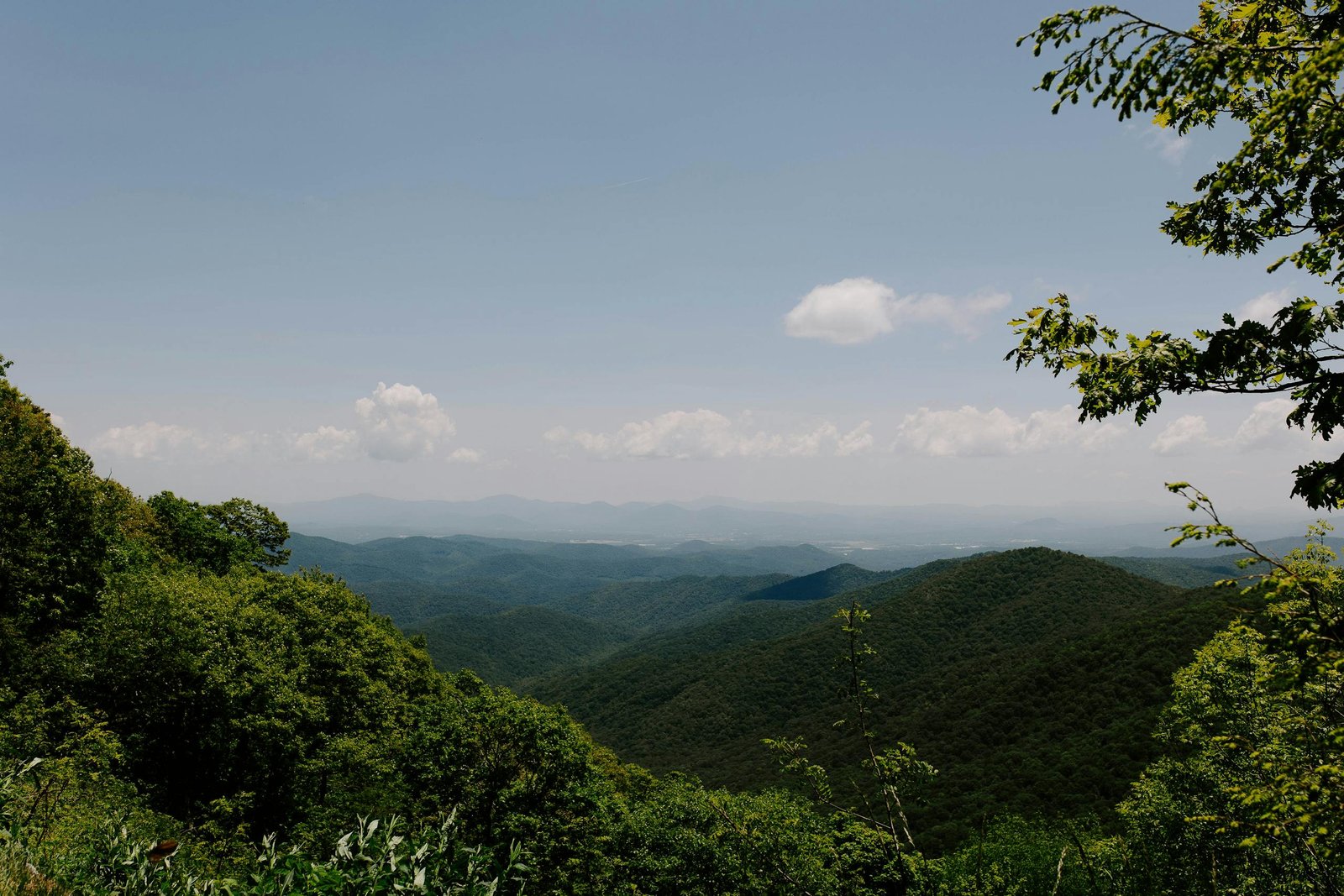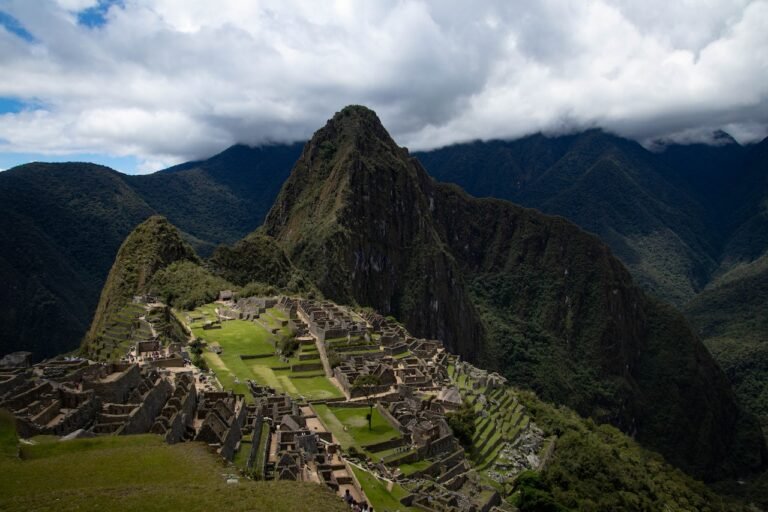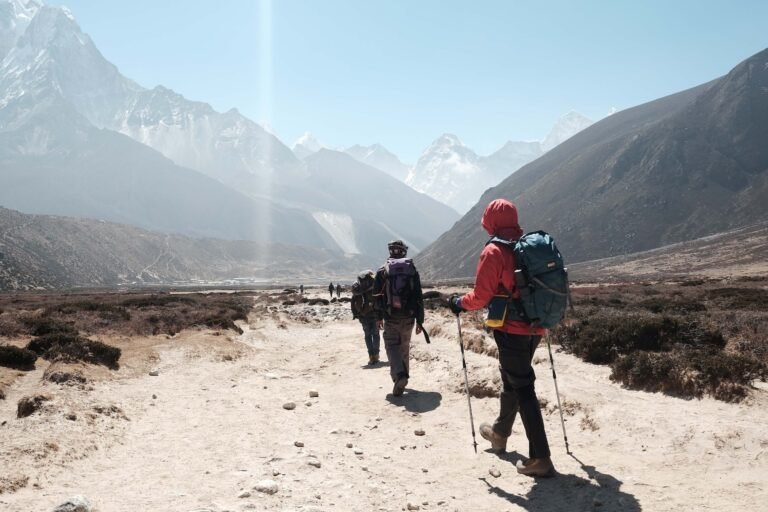Embarking on a long-distance trek is a journey that tests endurance, spirit, and the human connection with nature. These treks traverse some of the most breathtaking landscapes on Earth, offering adventurers a chance to experience diverse cultures, challenging terrains, and unparalleled natural beauty. Here are the top 5 long-distance treks around the world that promise an unforgettable adventure:
1. Exploring The Appalachian Trail: A Long-Distance Trekker’s Dream
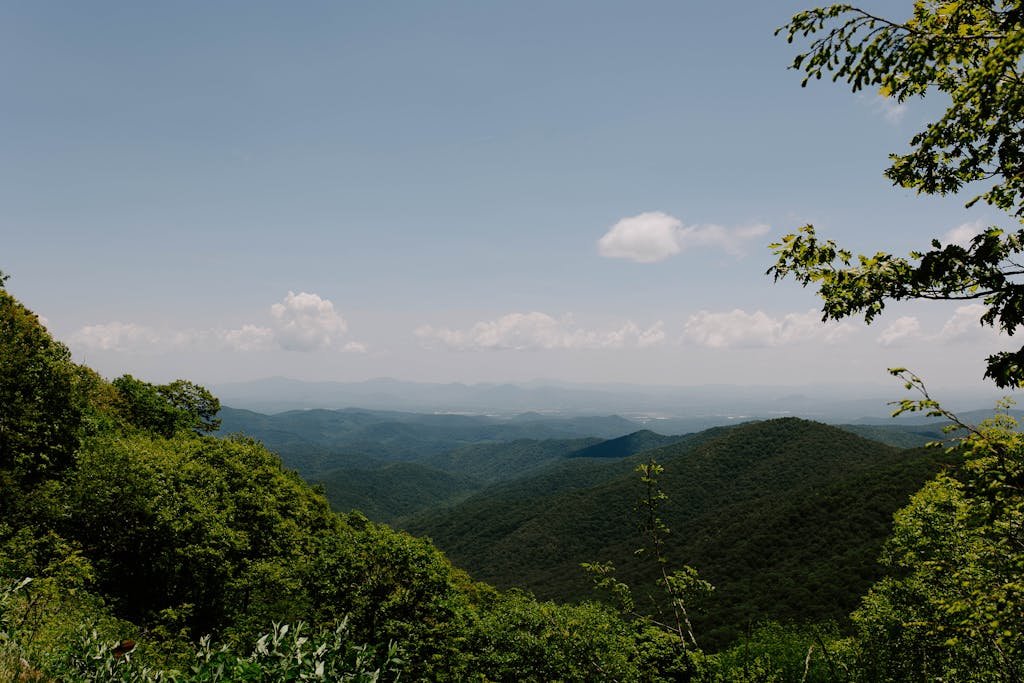
The Appalachian Trail, often referred to as the A.T., is a long-distance trekker’s dream, stretching over 2,190 miles from Georgia to Maine. This iconic trail offers a unique blend of natural beauty, challenging terrain, and a rich history that captivates the hearts of adventurers from around the globe. As you embark on this journey, you’ll find yourself traversing through 14 states, each offering its own distinct landscapes and experiences.
Starting in the southern terminus at Springer Mountain, Georgia, the trail welcomes hikers with lush forests and rolling hills. The initial sections are relatively gentle, allowing trekkers to ease into the rhythm of long-distance hiking. As you progress northward, the terrain gradually becomes more demanding, with the Smoky Mountains presenting the first significant challenge. Here, the trail reaches elevations of over 6,000 feet, offering breathtaking vistas and a sense of accomplishment for those who conquer its peaks.
Transitioning into the mid-Atlantic states, the trail meanders through Virginia, West Virginia, Maryland, and Pennsylvania. Virginia, in particular, boasts the longest stretch of the A.T., with nearly a quarter of the trail’s total mileage. This section is known for its scenic beauty, including the iconic McAfee Knob and the Grayson Highlands, where wild ponies roam freely. The mid-Atlantic region also introduces hikers to the infamous “Rocksylvania,” a stretch in Pennsylvania notorious for its rocky and rugged terrain.
As you continue north, the trail enters the New England states, where the landscape undergoes a dramatic transformation. The White Mountains of New Hampshire present some of the most challenging and rewarding sections of the A.T. The Presidential Range, with its steep ascents and unpredictable weather, tests even the most seasoned hikers. However, the panoramic views from summits like Mount Washington make every arduous step worthwhile.
Crossing into Maine, the final state on the journey, hikers are greeted with a sense of anticipation and accomplishment. The Hundred-Mile Wilderness, a remote and rugged section, serves as a fitting prelude to the trail’s northern terminus. This stretch demands self-sufficiency and resilience, as it offers limited resupply points and challenging terrain. Yet, the solitude and pristine beauty of this wilderness area provide a profound sense of connection with nature.
Reaching the summit of Mount Katahdin in Maine marks the culmination of this epic journey. The sense of achievement and camaraderie among fellow hikers is palpable, as you stand atop the northern terminus, reflecting on the miles traveled and the memories made. The Appalachian Trail is more than just a physical challenge; it is a transformative experience that fosters personal growth, resilience, and a deep appreciation for the natural world.
Throughout the journey, hikers encounter a vibrant community of fellow adventurers, known as “thru-hikers,” who share stories, support, and camaraderie along the way. Trail towns, hostels, and shelters provide opportunities for rest and resupply, while also offering a glimpse into the local culture and hospitality. The A.T. is not just a trail; it is a tapestry of experiences, woven together by the people and places that make it truly special.
Exploring the Appalachian Trail is a long-distance trekker’s dream, offering a diverse and challenging adventure through some of the most beautiful landscapes in the United States. From the rolling hills of Georgia to the rugged peaks of Maine, this trail promises an unforgettable journey filled with natural wonders, personal triumphs, and lasting memories. Whether you are a seasoned hiker or a novice adventurer, the A.T. beckons with the promise of discovery and the allure of the great outdoors.
2. Conquering The Pacific Crest Trail: Tips And Highlights

Conquering the Pacific Crest Trail is a dream for many avid hikers and adventurers. Stretching over 2,650 miles from the Mexican border in California to the Canadian border in Washington, this iconic trail offers a diverse range of landscapes, from arid deserts to lush forests and snow-capped mountains. To successfully navigate this epic journey, it’s essential to be well-prepared and knowledgeable about what lies ahead. Here are some tips and highlights to help you make the most of your Pacific Crest Trail experience.
First and foremost, preparation is key. Before setting out, ensure you have the right gear. A lightweight, durable backpack is crucial, as you’ll be carrying it for months. Invest in high-quality, comfortable hiking boots, as well as moisture-wicking clothing to keep you dry and comfortable. Additionally, a reliable tent and sleeping bag are essential for the varying weather conditions you’ll encounter. Don’t forget to pack a water filtration system, as access to clean water can be limited in some sections of the trail.
As you embark on your journey, it’s important to pace yourself. The Pacific Crest Trail is a marathon, not a sprint. Start with shorter daily distances to allow your body to acclimate to the physical demands of long-distance hiking. Gradually increase your mileage as you build strength and endurance. Remember to listen to your body and take rest days when needed to prevent injuries and burnout.
One of the most rewarding aspects of the Pacific Crest Trail is the sense of community among hikers. You’ll meet people from all walks of life, each with their own unique stories and motivations for tackling the trail. Embrace the camaraderie and support that comes from sharing this incredible experience with others. Trail angels, local volunteers who provide assistance to hikers, are another invaluable resource. They often offer food, water, and even a place to rest, making your journey a little easier.
Navigating the trail can be challenging, so it’s essential to have reliable maps and a GPS device. While the trail is generally well-marked, there are sections where signage may be sparse or confusing. Familiarize yourself with the route and key landmarks before setting out each day. Additionally, keep an eye on weather forecasts, as conditions can change rapidly, especially in mountainous areas.
One of the highlights of the Pacific Crest Trail is the stunning scenery you’ll encounter along the way. In Southern California, you’ll traverse the arid Mojave Desert, with its unique flora and fauna. As you move north, the trail takes you through the majestic Sierra Nevada, home to iconic landmarks like Mount Whitney and Yosemite National Park. Further along, you’ll experience the volcanic landscapes of Oregon and the lush, green forests of Washington. Each section of the trail offers its own unique beauty and challenges, making the journey a truly unforgettable experience.
Wildlife encounters are another memorable aspect of the Pacific Crest Trail. Keep an eye out for deer, elk, and even black bears. While these animals are generally not aggressive, it’s important to practice proper food storage and be aware of your surroundings to minimize any potential risks.
Conquering the Pacific Crest Trail is a monumental achievement that requires careful planning, physical endurance, and a sense of adventure. By preparing adequately, pacing yourself, and embracing the trail community, you’ll be well on your way to completing this incredible journey. The breathtaking landscapes and unforgettable experiences you’ll encounter along the way make every step worth the effort.
3. The Magic Of The Camino De Santiago: A Pilgrim’s Journey
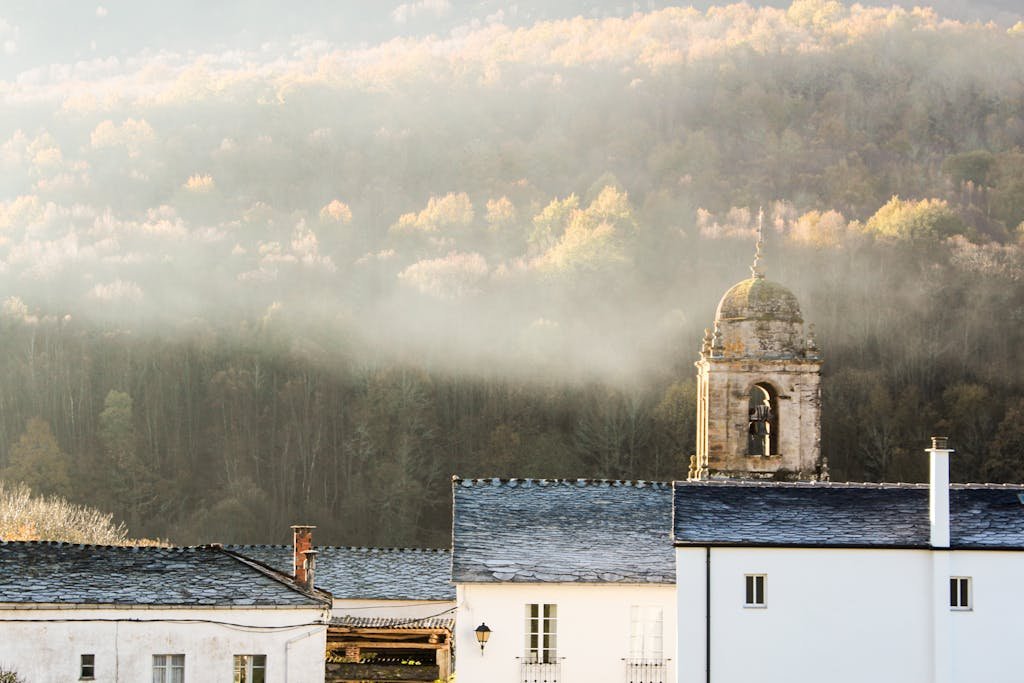
The Camino de Santiago, often referred to as the Way of St. James, is one of the most iconic long-distance treks in the world. This ancient pilgrimage route, which culminates at the Cathedral of Santiago de Compostela in northwestern Spain, has been walked by millions of pilgrims for over a thousand years. The magic of the Camino lies not just in its historical and spiritual significance, but also in the profound personal experiences it offers to those who embark on this journey.
Walking the Camino is a deeply personal experience, yet it is also a communal one. Pilgrims from all walks of life and from all corners of the globe come together, united by a common goal. This sense of camaraderie is palpable along the route, as fellow travelers share stories, meals, and moments of reflection. The Camino fosters a unique sense of community, where the journey itself becomes as important as the destination.
The Camino de Santiago is not a single path but a network of routes that traverse various parts of Europe, all leading to Santiago de Compostela. The most popular route is the Camino Francés, which starts in St. Jean Pied de Port in France and spans approximately 800 kilometers. This route takes pilgrims through diverse landscapes, from the rolling hills of the Pyrenees to the vast plains of the Meseta, and finally to the lush green region of Galicia. Each section of the Camino offers its own unique challenges and rewards, making the journey a constantly evolving experience.
One of the most enchanting aspects of the Camino is the rich tapestry of history and culture that unfolds along the way. Pilgrims pass through medieval towns, ancient churches, and historic landmarks, each with its own story to tell. The route is dotted with albergues, or pilgrim hostels, where travelers can rest and recharge. These humble accommodations often become places of deep connection and reflection, as pilgrims share their experiences and insights with one another.
Moreover, the physical act of walking day after day, often for weeks on end, has a transformative effect on many pilgrims. The repetitive rhythm of walking becomes a form of moving meditation, allowing individuals to disconnect from the distractions of modern life and reconnect with themselves. The simplicity of life on the Camino, where the primary concerns are food, shelter, and the next day’s journey, can be profoundly liberating.
In addition to the personal and communal aspects, the Camino de Santiago is also a journey of spiritual significance for many. While some pilgrims walk for religious reasons, others are drawn by a sense of adventure, a desire for self-discovery, or simply the allure of the open road. Regardless of the initial motivation, many find that the Camino has a way of revealing deeper truths and insights along the way. The journey often becomes a metaphor for life itself, with its ups and downs, challenges and triumphs.
The magic of the Camino de Santiago lies in its ability to offer a deeply personal yet universally shared experience. It is a journey that transcends time and place, connecting pilgrims to a rich history and to each other. Whether walked for spiritual, personal, or adventurous reasons, the Camino has a way of leaving an indelible mark on those who undertake it. The pilgrimage to Santiago de Compostela is not just a trek across a landscape, but a journey into the heart and soul of what it means to be human.
4. Trekking The Great Himalaya Trail: An Adventurer’s Guide
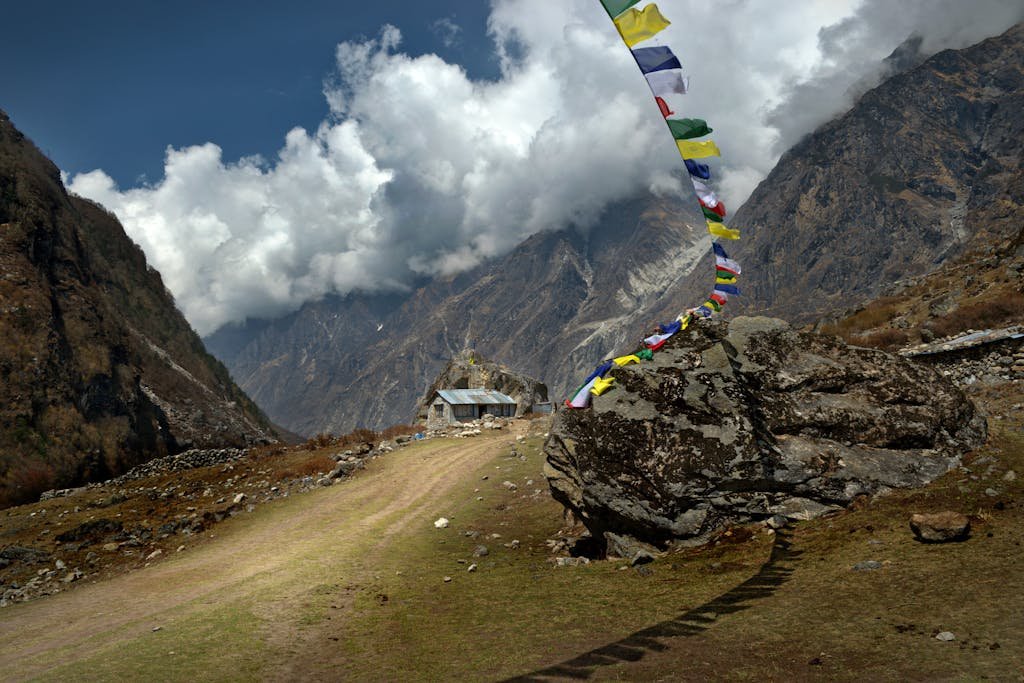
Starting in Bhutan, the Great Himalaya Trail introduces you to the Land of the Thunder Dragon. Here, you’ll traverse through lush forests, ancient monasteries, and remote villages that seem untouched by time. The Bhutanese section of the trail is known for its pristine environment and rich biodiversity, making it a haven for nature lovers. As you move forward, the trail takes you into India, where the landscape transforms dramatically. The Indian Himalayas are characterized by their rugged beauty, with towering peaks, deep valleys, and vibrant local cultures. Trekking through regions like Sikkim and Himachal Pradesh, you’ll encounter a mix of Hindu and Buddhist traditions, adding a spiritual dimension to your adventure.
Transitioning into Nepal, the heart of the Great Himalaya Trail, you’ll find yourself in the shadow of some of the world’s highest peaks, including Mount Everest. Nepal offers a variety of trekking routes, each with its unique charm and challenges. The Annapurna Circuit and the Everest Base Camp trek are among the most popular, drawing trekkers from around the globe. However, the Great Himalaya Trail goes beyond these well-trodden paths, leading you into remote areas where few have ventured. Here, you’ll experience the raw beauty of the Himalayas, with its glacial lakes, high-altitude deserts, and traditional Sherpa villages.
As you continue your journey into Pakistan, the trail takes you through the Karakoram Range, home to some of the most formidable peaks on the planet, including K2. The Pakistani section of the trail is renowned for its dramatic landscapes and challenging conditions. Trekkers must be well-prepared and experienced to navigate this part of the trail, but the rewards are immense. The sight of the towering peaks, the sound of glacial rivers, and the hospitality of the local Balti people make this a truly unique experience.
Finally, the trail leads you into Tibet, the Roof of the World. Here, you’ll trek through high-altitude plateaus, past ancient monasteries, and alongside nomadic herders. The Tibetan section of the Great Himalaya Trail is a spiritual journey as much as a physical one. The serene beauty of the landscape, combined with the rich cultural heritage of the Tibetan people, offers a profound sense of peace and reflection.
Throughout your trek on the Great Himalaya Trail, you’ll face numerous challenges, from unpredictable weather to difficult terrains. However, the sense of accomplishment and the stunning vistas make every hardship worthwhile. It’s essential to be well-prepared, both physically and mentally, for this adventure. Proper gear, acclimatization, and a good understanding of the trail’s demands are crucial for a successful trek.
The Great Himalaya Trail is more than just a trek; it’s a journey through some of the most awe-inspiring landscapes and cultures on Earth. Whether you’re an experienced trekker or someone looking to push your boundaries, this trail offers an adventure of a lifetime. So lace up your boots, pack your backpack, and get ready to explore the majestic Himalayas like never before.
5. Discovering The Te Araroa Trail: New Zealand’s Ultimate Hike

Embarking on a long-distance trek is a dream for many adventurers, and New Zealand’s Te Araroa Trail stands out as one of the most captivating journeys one can undertake. Stretching over 3,000 kilometers from the northern tip of the North Island to the southernmost point of the South Island, this trail offers an unparalleled experience of the country’s diverse landscapes and rich cultural heritage. As you traverse the length of New Zealand, you’ll encounter everything from bustling cities to remote wilderness, making the Te Araroa Trail a truly unique adventure.
One of the most remarkable aspects of the Te Araroa Trail is its incredible variety of terrains. Starting in Cape Reinga, the northernmost point of the North Island, hikers are immediately greeted with stunning coastal views and sandy beaches. As you make your way south, the trail takes you through lush forests, rolling farmlands, and volcanic landscapes. The North Island section of the trail is known for its vibrant Maori culture, and you’ll have the opportunity to visit marae (Maori meeting grounds) and learn about the traditions and history of the indigenous people.
Transitioning to the South Island, the scenery becomes even more dramatic. The trail winds through the Southern Alps, offering breathtaking views of snow-capped peaks, glacial valleys, and pristine lakes. This section of the trail is more challenging, with rugged terrain and unpredictable weather, but the rewards are well worth the effort. The South Island is also home to some of New Zealand’s most famous national parks, including Fiordland and Mount Aspiring, where you’ll be surrounded by untouched wilderness and abundant wildlife.
One of the unique features of the Te Araroa Trail is its integration with local communities. Unlike many long-distance trails that are isolated from civilization, the Te Araroa often passes through towns and villages, allowing hikers to resupply, rest, and interact with locals. This not only makes the logistics of the hike more manageable but also provides a richer cultural experience. You’ll have the chance to sample local cuisine, stay in charming accommodations, and even participate in community events.
While the Te Araroa Trail is a challenging endeavor, it is accessible to hikers of varying skill levels. The trail is well-marked, and there are numerous resources available to help you plan your journey, including detailed maps, guidebooks, and online forums where you can connect with other hikers. It’s important to be well-prepared, as the trail can be demanding, particularly in remote areas where help may be far away. However, with proper planning and a spirit of adventure, the Te Araroa Trail is an achievable goal for many outdoor enthusiasts.
The Te Araroa Trail offers an extraordinary opportunity to explore the natural beauty and cultural richness of New Zealand. From the sandy beaches of the North Island to the rugged mountains of the South Island, this trail provides a diverse and immersive experience that is sure to leave a lasting impression. Whether you’re an experienced hiker or a novice looking for a new challenge, the Te Araroa Trail is a journey that promises adventure, discovery, and a deep connection with one of the world’s most stunning landscapes.
6. The Beauty Of The Continental Divide Trail: A Hiker’s Paradise
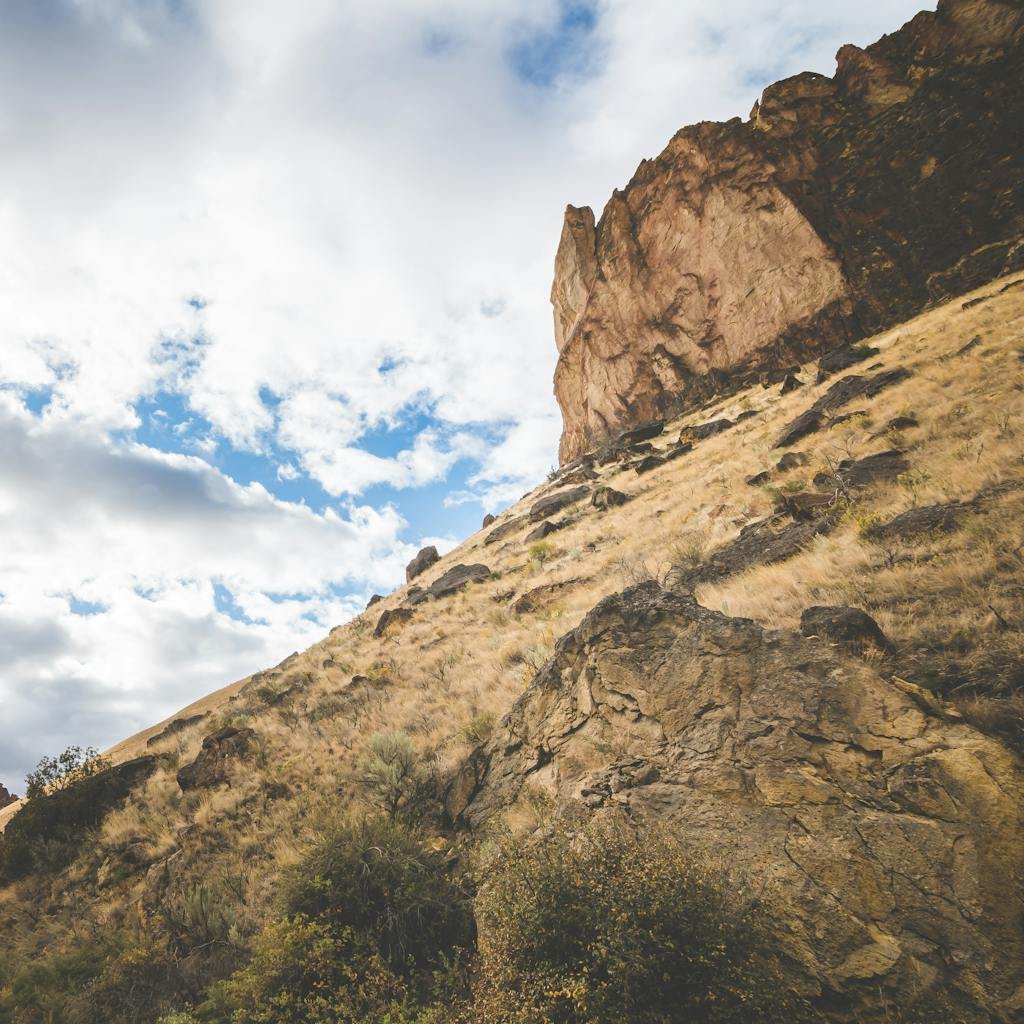
The Continental Divide Trail (CDT) is often hailed as one of the most breathtaking long-distance treks in the world, and for good reason. Stretching over 3,100 miles from the Canadian border in Montana to the Mexican border in New Mexico, this trail offers an unparalleled journey through some of the most diverse and stunning landscapes in North America. As you traverse the CDT, you’ll encounter everything from rugged mountain ranges and alpine meadows to arid deserts and lush forests, making it a hiker’s paradise.
One of the most captivating aspects of the CDT is its sheer variety. Unlike some trails that may offer a more uniform experience, the CDT constantly surprises and challenges hikers with its ever-changing terrain. For instance, in Montana and Idaho, you’ll find yourself navigating through the Rocky Mountains, where snow-capped peaks and crystal-clear lakes create a picture-perfect backdrop. As you move further south into Wyoming, the trail takes you through the iconic Yellowstone National Park, where geothermal wonders and abundant wildlife add an extra layer of excitement to your journey.
Transitioning into Colorado, the CDT reaches its highest elevations, offering some of the most dramatic and awe-inspiring views along the entire route. Here, the trail winds through the San Juan and Sawatch mountain ranges, where jagged peaks and expansive vistas are the norm. It’s in Colorado that many hikers experience the true meaning of “high country,” with elevations often exceeding 12,000 feet. The sense of accomplishment that comes from conquering these heights is indescribable, and the memories made here are sure to last a lifetime.
As you continue southward into New Mexico, the landscape shifts once again, this time to a more arid and desert-like environment. The stark beauty of the desert, with its wide-open spaces and unique flora and fauna, offers a completely different but equally captivating experience. The contrast between the lush forests of the north and the arid deserts of the south is one of the many elements that make the CDT such a unique and rewarding trek.
Moreover, the CDT is not just about the physical journey; it’s also a deeply personal and introspective experience. The solitude and vastness of the trail provide ample opportunity for reflection and self-discovery. Many hikers find that the challenges they face on the trail, whether it’s navigating difficult terrain or dealing with unpredictable weather, help them grow both mentally and emotionally. The sense of community among CDT hikers is also something special. Despite the trail’s remote nature, you’ll often find yourself forming close bonds with fellow trekkers, sharing stories, tips, and encouragement along the way.
In addition to its natural beauty and personal rewards, the CDT also offers a chance to connect with the rich cultural and historical heritage of the regions it traverses. From ancient Native American sites to historic mining towns, the trail is steeped in history. This cultural tapestry adds another layer of depth to the hiking experience, making it not just a physical journey but a journey through time as well.
The Continental Divide Trail is a true gem among long-distance treks. Its diverse landscapes, challenging terrain, and rich cultural heritage make it a must-do for any serious hiker. Whether you’re seeking adventure, personal growth, or simply a chance to immerse yourself in some of the most beautiful scenery on Earth, the CDT has something to offer. So lace up your hiking boots, pack your gear, and get ready to embark on the adventure of a lifetime.
7. The Wonders Of The Overland Track: Tasmania’s Premier Trek

Nestled in the heart of Tasmania, the Overland Track is a gem that beckons adventurers from around the globe. This 65-kilometer trek, stretching from Cradle Mountain to Lake St. Clair, offers a unique blend of natural beauty, challenging terrain, and rich history. As one of the top long-distance treks in the world, the Overland Track provides an unparalleled experience for those willing to embark on this journey.
Starting at Cradle Mountain, trekkers are immediately greeted by the rugged beauty of the Tasmanian wilderness. The iconic peak of Cradle Mountain, often shrouded in mist, sets the tone for the adventure ahead. The initial ascent can be demanding, but the panoramic views from Marion’s Lookout make every step worthwhile. From here, the track meanders through alpine meadows, ancient rainforests, and glacial valleys, each offering a distinct and breathtaking landscape.
One of the most remarkable aspects of the Overland Track is its biodiversity. The trail is home to a variety of endemic species, including the Tasmanian devil, wombats, and echidnas. Birdwatchers will be delighted by the presence of the black currawong and the pink robin, among other avian wonders. The flora is equally impressive, with ancient King Billy pines and vibrant wildflowers adding splashes of color to the scenery. This rich tapestry of life is a testament to Tasmania’s unique ecological heritage.
As trekkers progress along the trail, they encounter a series of huts that provide shelter and a place to rest. These huts, maintained by the Tasmania Parks and Wildlife Service, are a welcome sight after a long day of hiking. They offer basic amenities, including bunks and water tanks, ensuring that trekkers can recharge for the next leg of their journey. While the huts are a convenient option, many adventurers choose to camp under the stars, immersing themselves fully in the wilderness experience.
The Overland Track is not just about physical endurance; it also offers a journey through time. The trail passes through areas that have been shaped by both natural forces and human history. Aboriginal heritage sites along the track provide a glimpse into the lives of the indigenous people who have called this land home for thousands of years. Additionally, remnants of early European exploration and settlement can be found, adding another layer of intrigue to the trek.
Weather on the Overland Track can be unpredictable, with conditions ranging from sunny and warm to cold and snowy, sometimes within the same day. This variability adds an element of challenge and excitement, requiring trekkers to be well-prepared and adaptable. Proper gear, including waterproof clothing and sturdy boots, is essential to navigate the diverse terrain and weather conditions.
Reaching the end of the Overland Track at Lake St. Clair is a moment of triumph and reflection. The serene waters of Australia’s deepest lake provide a fitting conclusion to the trek, offering a sense of peace and accomplishment. Many trekkers choose to take a boat across the lake, savoring the final moments of their journey while reflecting on the incredible landscapes and experiences they have encountered.
The Overland Track in Tasmania is a must-do for any avid trekker. Its combination of stunning scenery, rich biodiversity, historical significance, and challenging terrain makes it one of the top long-distance treks in the world. Whether you are an experienced hiker or a novice adventurer, the Overland Track promises an unforgettable journey through one of the most beautiful and pristine wilderness areas on the planet.
8. Navigating The Israel National Trail: A Cultural Expedition

Embarking on the Israel National Trail is not just a journey through diverse landscapes but also a deep dive into the rich tapestry of history and culture that defines this unique region. Stretching over 1,000 kilometers from the northern tip of Israel at Kibbutz Dan to the southernmost point at Eilat, this trail offers an unparalleled opportunity to experience the country’s multifaceted identity. As you traverse this extensive path, you’ll find yourself moving seamlessly from lush forests and verdant hills to arid deserts and rugged mountains, each segment offering its own distinct flavor and story.
One of the most compelling aspects of the Israel National Trail is its ability to connect hikers with the historical and cultural essence of the land. For instance, as you walk through the Galilee region, you’ll encounter ancient ruins and historical sites that date back thousands of years. This area is not only significant for its biblical history but also for its modern-day cultural vibrancy. Small villages and towns along the way offer a glimpse into the daily lives of the local people, providing an enriching experience that goes beyond the physical challenge of the trek.
Transitioning from the lush north to the central regions, the trail takes you through bustling cities like Tel Aviv and Jerusalem. These urban segments are a stark contrast to the natural beauty that dominates much of the trail, yet they are equally captivating. In Tel Aviv, the trail meanders through vibrant neighborhoods, bustling markets, and along the Mediterranean coastline, offering a taste of contemporary Israeli life. Jerusalem, on the other hand, is a city steeped in history and spirituality. Walking through its ancient streets, you can’t help but feel the weight of its historical significance, making it a highlight for many trekkers.
As you continue southward, the landscape begins to change dramatically. The Negev Desert presents a challenging yet awe-inspiring segment of the trail. Here, the vast, open spaces and stark beauty of the desert offer a sense of solitude and reflection. The Ramon Crater, a geological wonder, is one of the many highlights in this region. This part of the trail is not just about physical endurance; it’s also a mental and emotional journey, as the desert has a way of stripping away the superfluous and bringing you face-to-face with your own thoughts and feelings.
Finally, reaching the southern terminus at Eilat, you are greeted by the stunning Red Sea. This final segment of the trail is a reward in itself, with opportunities for snorkeling, diving, and simply relaxing by the sea. The sense of accomplishment that comes with completing the Israel National Trail is profound, but equally significant is the deep connection you will have forged with the land and its people.
Navigating the Israel National Trail is much more than a long-distance trek; it is a cultural expedition that offers a unique blend of natural beauty, historical depth, and contemporary vibrancy. Whether you are an experienced hiker or a cultural enthusiast, this trail promises an unforgettable journey that will leave you with lasting memories and a deeper understanding of Israel’s rich and diverse heritage.
9. The Challenges Of The Arctic Circle Trail: Greenland’s Remote Trek

The Arctic Circle Trail in Greenland is a trek that promises an unparalleled adventure for those who seek to challenge themselves in one of the most remote and pristine environments on Earth. Spanning approximately 165 kilometers from Kangerlussuaq to Sisimiut, this trail offers a unique blend of natural beauty and rugged terrain, making it a must-do for seasoned hikers. However, the Arctic Circle Trail is not for the faint-hearted, as it presents a series of challenges that test both physical endurance and mental fortitude.
One of the primary challenges of the Arctic Circle Trail is its remoteness. Unlike more popular trekking destinations, this trail is far removed from civilization. Hikers must be entirely self-sufficient, carrying all necessary supplies, including food, shelter, and emergency equipment. The lack of infrastructure means there are no convenient rest stops or supply points along the way, so careful planning and preparation are crucial. This isolation can be both a blessing and a curse; while it offers a rare opportunity to disconnect from the modern world and immerse oneself in nature, it also means that help is not readily available in case of an emergency.
Another significant challenge is the unpredictable weather. Greenland’s climate can be harsh and changeable, with conditions ranging from sunny and mild to cold and stormy, sometimes within the same day. Hikers must be prepared for all types of weather, packing appropriate clothing and gear to stay warm and dry. The trail is typically hiked during the summer months when the weather is more favorable, but even then, temperatures can drop significantly, especially at night. The long daylight hours of the Arctic summer can be disorienting, making it difficult to establish a regular sleep pattern, which adds another layer of complexity to the trek.
The terrain itself poses its own set of challenges. The Arctic Circle Trail traverses a variety of landscapes, including rocky hills, expansive tundra, and numerous lakes and rivers. While the trail is generally well-marked, the rugged and uneven ground can be tough on the feet and ankles, requiring sturdy footwear and a good level of physical fitness. River crossings are a common feature of the trail, and depending on the water levels, they can range from simple wades to more challenging fords. Hikers must be cautious and prepared to navigate these crossings safely.
Wildlife encounters, while often a highlight of the trek, can also present challenges. Greenland is home to a variety of animals, including reindeer, musk oxen, and Arctic foxes. While these creatures are generally not aggressive, it is important to maintain a respectful distance and avoid disturbing their natural habitat. Additionally, the presence of insects, particularly mosquitoes, can be a significant nuisance during the summer months, so packing insect repellent and protective clothing is advisable.
Despite these challenges, the rewards of completing the Arctic Circle Trail are immense. The sense of accomplishment that comes from overcoming such a demanding trek is unparalleled, and the stunning natural beauty of Greenland’s wilderness leaves a lasting impression. The trail offers a rare opportunity to experience true solitude and connect with nature in its most unspoiled form. For those who are well-prepared and up for the challenge, the Arctic Circle Trail is an unforgettable adventure that provides both physical and mental enrichment.
10. The Allure Of The Lycian Way: Turkey’s Coastal Path
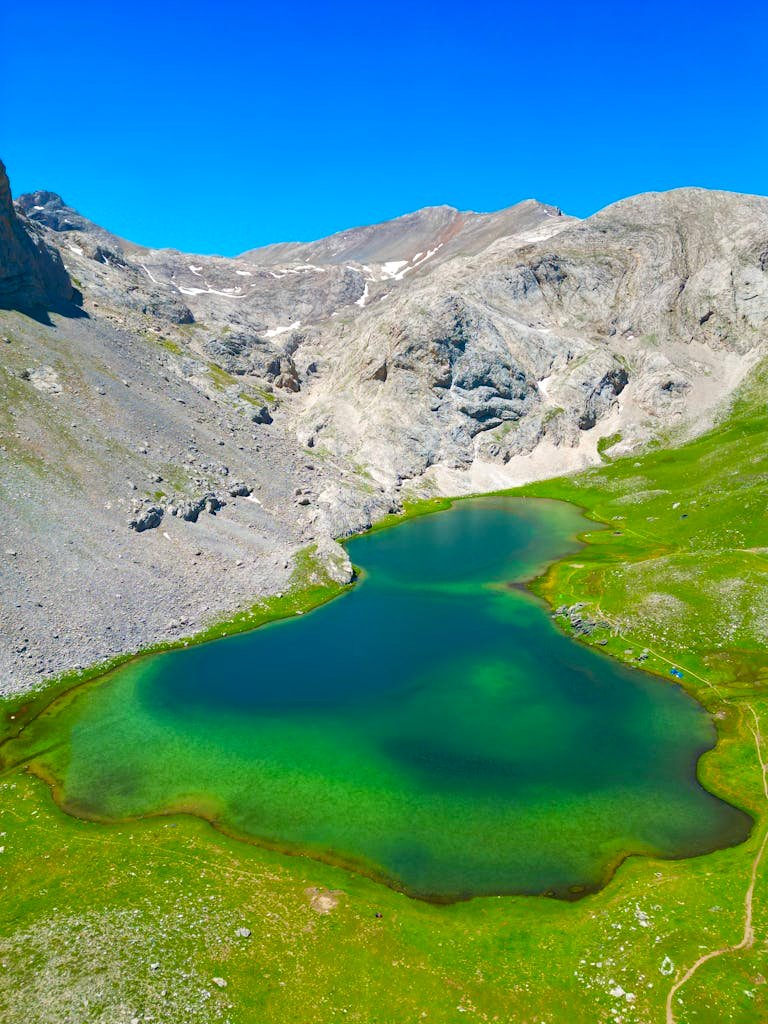
The allure of the Lycian Way, Turkey’s coastal path, is undeniable for those who seek a blend of natural beauty, historical intrigue, and cultural richness. This long-distance trek, stretching approximately 540 kilometers along the southwestern coast of Turkey, offers an unparalleled experience for hikers of all levels. As you embark on this journey, you’ll find yourself captivated by the stunning landscapes, ancient ruins, and charming villages that dot the route.
One of the most striking features of the Lycian Way is its diverse scenery. The trail meanders through lush forests, rugged mountains, and pristine beaches, providing a constantly changing backdrop that keeps the trek exciting and engaging. As you hike along the path, you’ll be treated to breathtaking views of the turquoise Mediterranean Sea, which serves as a constant companion throughout much of the journey. The coastal vistas are particularly enchanting at sunrise and sunset, when the sky is painted in hues of orange, pink, and purple.
In addition to its natural beauty, the Lycian Way is steeped in history. The trail takes its name from the ancient Lycian civilization, which thrived in this region over two millennia ago. As you walk, you’ll encounter numerous archaeological sites, including the ruins of ancient cities, rock-cut tombs, and well-preserved amphitheaters. These remnants of the past offer a fascinating glimpse into the lives of the Lycians and their impressive architectural achievements. Notable sites along the route include the ancient city of Patara, the birthplace of St. Nicholas, and the impressive rock tombs of Myra.
The Lycian Way also provides ample opportunities to immerse yourself in Turkish culture. The trail passes through several small villages, where you can experience the warm hospitality of the local people. Many villagers are eager to share their traditions, cuisine, and stories with visitors, making for a truly enriching experience. As you rest and refuel in these villages, you’ll have the chance to sample delicious Turkish dishes, such as gözleme (a savory stuffed flatbread) and köfte (spiced meatballs), which are sure to satisfy your appetite after a long day of hiking.
Moreover, the Lycian Way is well-marked and relatively accessible, making it an ideal choice for both seasoned trekkers and those new to long-distance hiking. The trail is divided into manageable sections, allowing hikers to customize their journey based on their fitness level and available time. Whether you choose to tackle the entire route or just a portion of it, you’ll find that the Lycian Way offers a rewarding and unforgettable adventure.
The Lycian Way is a captivating long-distance trek that combines stunning natural landscapes, rich historical sites, and vibrant cultural experiences. As you traverse this coastal path, you’ll be constantly amazed by the beauty and diversity of the region. The trail’s accessibility and well-marked routes make it an excellent choice for hikers of all levels, ensuring that everyone can enjoy the magic of Turkey’s southwestern coast.
So, lace up your hiking boots, pack your backpack, and set off on an unforgettable journey along the Lycian Way.
These top 5 long-distance treks provide a mix of physical challenge, breathtaking scenery, and cultural immersion, making them some of the most rewarding hiking experiences available globally.

